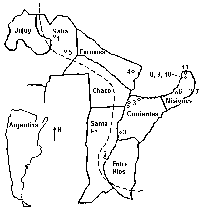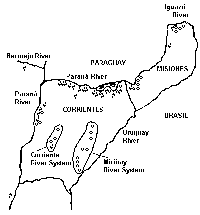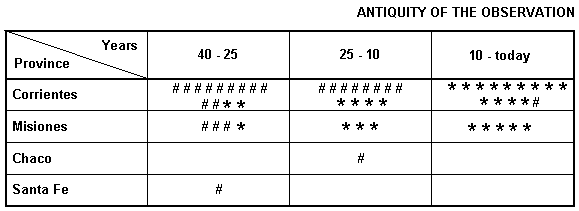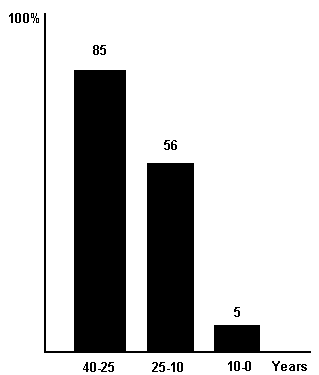 |
Last Update:
Friday November 23, 2018
|
| [Home] |
|
Volume 7 Pages 1 - 43 (February 1992) Citation: Parera, A.F. (1992) Present Knowledge on the Giant Otter in Argentina IUCN Otter Spec. Group Bull. 7: 19 - 22 Present Knowledge on the Giant Otter in Argentina Anibal F. Parera Ariraí Project, Tonelero 6848, 1408 Buenos Aíres, Argentina
The giant otter Pteronura brasiliensis is regarded as one of the most endangered mammals in Argentina (Chehebar 1990). A literature search revealed eleven references to sightings of giant otters in Argentina between 1780 and 1991: only four of which related to the present century. These records are indicated in Figure 1.
Since 1989 field surveys have been carried out to determine possible presence in areas from : which the otter was previously recorded. Searches along rivers were conducted and local people, particularly hunters, fishermen and boatmen, were questioned. The searches revealed very little information, but from the enquiries 53 records of occurrence of the giant otter were compiled (Figure 2).
P. brasiliensis is a social mustelid, forming close familiar groups, consisting of a stable adult pair together with their cubs and sub-adults (Duplaix 1980; Munn 1985). I considered three or more animals as a familiar group. If the data on groups and lone animals in current and former times are considered (Figure 3) one sees that there is a marked decline in the percentage of familiar groups (Figure 4).
Causes of disappearance are not clear. The commercial hunting of giant otters does not seem to have been important in Argentina in recent decades, but this does not mean that heavy hunting pressure in the past, combined with other factors, provoked the decline of the species. Some of these factors could be:
It is important to recognise that the giant otter in the Argentinean Mesopotamia occupies the southernmost part of its range, so minor changes in some ecological factors could affect populations more drastically than in the typical tropical areas. There are very few places suitable for the reintroduction of giant otters. Iguazi National Park could be a prime area. It contains more than 80 km of suitable habitat and otters have been recently recorded (Perara & Bosso 1991). REFERENCES Chehebar, C. 1990. Action Plan for
Latin-American Otters. In: P. Foster-Turley. S. MacDonald & C.
Mason (Ed): Otters, an action plan for their conservation. IUCN/SSC
Otter Specialist Group. Kelvyn Press. Illinois. USA. |
| [Copyright © 2006 - 2050 IUCN/SSC OSG] | [Home] | [Contact Us] |



